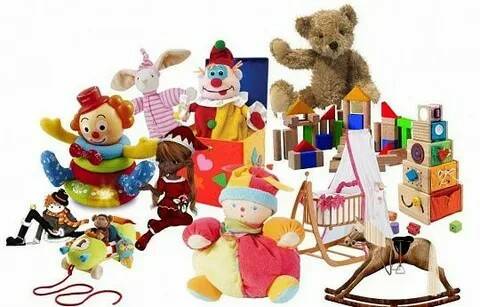
When it comes to online shopping for toys, here are some tips to consider:
- Age Appropriateness: Determine the age range for which the toy is designed. Pay attention to the manufacturer’s recommended age group to ensure the toy is suitable for the child you’re buying it for.
- Safety Standards: Check if the toy meets relevant safety standards and regulations. Look for certifications such as ASTM (American Society for Testing and Materials) or EN (European) safety standards. Avoid toys with small parts that may pose a choking hazard for young children.
- Reviews and Ratings: Read customer reviews and ratings for the toy you’re interested in. Reviews can provide insights into the toy’s quality, durability, and how well it is liked by other customers. Consider both positive and negative reviews to get a balanced understanding.
- Product Descriptions: Read the product description carefully to understand the features, functionality, and dimensions of the toy. Look for details on materials used, interactive features, battery requirements (if applicable), and any additional accessories included.
- Brand Reputation: Consider purchasing toys from reputable and well-known brands. Established brands often have a track record of producing high-quality toys that meet safety standards. They are more likely to provide better customer support and have reliable return policies.
Remember, it’s important to supervise children during playtime, especially with toys that may have small parts or potential safety risks. Always follow the manufacturer’s guidelines and instructions for safe use.
Contents
Age Appropriateness
Age appropriateness is a crucial factor to consider when buying toys from an online store. Here’s why it’s important and how to determine if a toy is suitable for a specific age group:
- Safety: Toys are designed with specific age ranges in mind to ensure they are safe and suitable for children’s developmental stages. Age-appropriate toys help minimize potential hazards, such as small parts that can be a choking hazard for young children.
- Developmental Stages: Toys that align with a child’s developmental stage can support their learning, motor skills, cognitive abilities, and creativity. Different age groups have varying needs and interests, so selecting toys that cater to their current abilities and interests can foster their growth and engagement.
- Manufacturer Recommendations: Pay attention to the manufacturer’s recommended age range for the toy. This information is usually provided in the product description or packaging. It indicates the intended age group based on safety considerations and developmental appropriateness.
- Skill Level and Complexity: Consider the complexity and skill level required to use the toy. Toys for younger children often focus on sensory exploration, basic motor skills, and cause-and-effect relationships. As children grow older, they may be ready for more complex toys that involve problem-solving, creativity, and advanced motor skills.
- Small Parts and Choking Hazards: Be cautious of toys with small parts that could pose a choking hazard, especially for children under the age of three. Ensure that the toy’s components are appropriately sized and securely attached to avoid any potential accidents.
Safety Standards
Safety standards are an essential aspect to consider when buying toys from an online store. Here’s why safety standards matter and how you can ensure the toys you purchase meet the necessary safety requirements:
- Protecting Children: Safety standards are in place to protect children from potential hazards associated with toys. These standards address factors such as choking hazards, toxic materials, sharp edges, flammability, and more.
- Compliance with Regulations: Different countries have specific safety regulations and standards for toys. It’s important to ensure that the toys you purchase online comply with the safety regulations of your country. Look for indications that the toy meets the relevant safety standards, such as the ASTM (American Society for Testing and Materials) or EN (European) safety standards.
- Verified Safety Labels: Check for safety labels or symbols on the toy’s packaging or product description. These labels indicate that the toy has undergone safety testing and meets specific safety requirements. Examples of such labels include the CE (Conformité Européene) mark for products sold within the European Economic Area.
- Age Appropriateness: Toys should be labeled with the recommended age range to help ensure they are suitable for a child’s developmental stage. Age-appropriate toys reduce the risk of accidents and injuries.
- Reliable Brands and Retailers: Purchase toys from reputable brands and trusted online retailers. Established brands often have a history of adhering to safety standards and producing quality products. Trusted online retailers are more likely to source toys from reputable manufacturers and ensure compliance with safety regulations.
Reviews and Ratings
Reviews and ratings are valuable sources of information when buying toys from an online store. Here’s why they are important and how you can use them to make informed purchasing decisions:
- Real User Experiences: Reviews and ratings provide insights into the experiences of other customers who have purchased and used the toy. They can offer valuable information about the toy’s quality, durability, functionality, and overall satisfaction.
- Unbiased Feedback: Reviews are typically written by individuals who have no affiliation with the manufacturer or retailer, making them more likely to provide unbiased opinions. Reading a variety of reviews can give you a well-rounded understanding of the toy’s pros and cons.
- Product Performance: Reviews can shed light on how well the toy performs in real-world scenarios. You can learn about its ease of use, functionality, and whether it meets the expectations set by the manufacturer.
- Quality and Durability: Customers often share their experiences regarding the toy’s quality and durability. This information can help you assess whether the toy is well-made and likely to withstand regular play and use.
- Safety Concerns: Reviews may highlight any safety issues or concerns that customers have encountered with the toy. Pay attention to any recurring safety-related comments to make an informed decision regarding the toy’s safety for your child.

Product Descriptions
Product descriptions play a crucial role in helping you make informed decisions when buying toys from an online store. Here’s why product descriptions are important and how you can use them effectively:
- Detailed Information: Product descriptions https://www.buydo.eu provide detailed information about the toy, including its features, specifications, dimensions, materials, and functionality. They give you a comprehensive overview of what the toy offers, allowing you to assess if it meets your specific requirements.
- Age Recommendations: Pay attention to the age recommendations mentioned in the product description. This helps you ensure that the toy is suitable for the intended age group and aligns with your child’s developmental stage.
- Key Features: The product description highlights the toy’s key features, such as its educational value, interactive elements, or unique selling points. This allows you to evaluate whether the toy aligns with your child’s interests and offers the desired play experience.
- Use Cases and Play Patterns: Some product descriptions may provide examples of how the toy can be used or the play patterns it promotes. This information can help you understand how the toy engages children and whether it aligns with your child’s preferences.
- Included Accessories or Additional Components: Check if the toy comes with any additional accessories or components that are mentioned in the product description. This can impact the overall value and functionality of the toy.
Brand Reputation
Brand reputation is an important factor to consider when buying toys from an online store. Here’s why brand reputation matters and how you can assess it:
- Quality and Safety Assurance: Established brands often have a reputation for producing high-quality and safe toys. They invest in research, testing, and quality control measures to ensure their products meet industry standards and regulations. Choosing a reputable brand increases the likelihood of purchasing toys that are durable, well-made, and safe for children.
- Trustworthiness and Reliability: Reputable brands have built trust and credibility among consumers over time. They have a track record of delivering products that align with their promises and meet customer expectations. By choosing a trusted brand, you can have more confidence in the quality and performance of the toy you are purchasing.
- Customer Service and Support: Well-known brands tend to have established customer service and support systems. This means that if you encounter any issues with your purchase, such as defects or missing parts, you can expect a higher level of assistance and resolution from a reputable brand compared to lesser-known or generic brands.
- Product Innovation and Variety: Reputable brands often invest in research and development to introduce innovative features and designs in their toys. They may also offer a wide range of products, providing you with more options to choose from and ensuring you can find toys that cater to specific interests or preferences.
- Positive Word of Mouth and Recommendations: A strong brand reputation is often reflected in positive word of mouth and recommendations from other parents, caregivers, or toy enthusiasts. Consider seeking opinions and recommendations from trusted sources, such as friends, family, or online communities, to gather insights on brands that have consistently delivered quality toys.